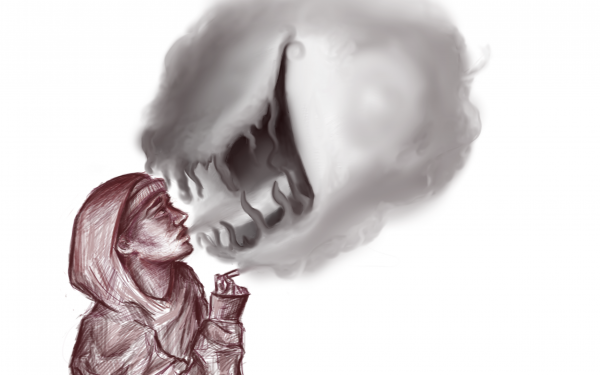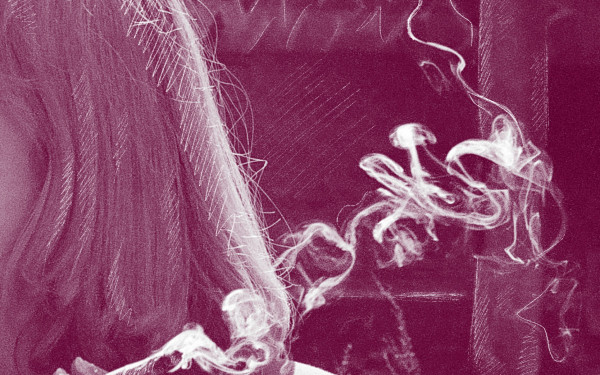Watching the Grass Grow
Vancouver’s Medical Marijuana Dispensaries are a Model for the Rest of Canada
There was a time when I believed that Canada would beat the states in the race to legalize weed. Sure, California has had its pseudo-legal dispensaries since 1996, but in 2003 we had Prime Minister Jean Chrétien proudly announce, “I will have my money for my fine and a joint in the other hand,” when marijuana was on the verge of being decriminalized. Flash forward to 2015 and the world looks a whole lot stranger.
South of the border, in the land of “Just Say NO!” four states have completely legalized recreational marijuana. Yet up north the laws regarding possession and sale of marijuana have become harsher, at least for most of the country. Vancouver has always been on the front lines of the war against the war on drugs. The city was home to Canada’s first pot cafés and sprouted the seed king Marc Emery. Vancouver’s 420 has become the largest marijuana activism celebration in North America.
In 2013, Vancouver took another big step forward. Dispensaries soon started popping up all over the city. By the time you read this sentence there will be almost 60 registered medical marijuana dispensaries located throughout the greater metropolitan area, surpassing the retail space of iconic drug-dealing franchise Tim Hortons. The real red-eye opener comes from the fact that 40 of those stores opened after April 1, 2014, the date when Harper’s Conservative majority tightened the laws surrounding medical marijuana in Canada and technically made every single one of those stores and all of the previous ones illegal.
April 1, 2015 marks the first year anniversary of Canada’s reformed medical marijuana industry. What used to be a program where patients could source or even grow their own medicine has turned into a privatized program, where only government-approved commercial growers are mandated to mail pot directly from the industrial grow-ops to the 37,000 registered users. As of March 2015, only 15 companies have been given approval to grow commercially as the start-up costs and tight regulations limit prospective entrepreneurs from entering the market. But these mandates from Ottawa are just mere suggestions out west.
On Kingsway Boulevard is Weeds Glass & Gifts. It’s just one storefront in Vancouver’s largest chain of dispensaries. Owner Don Briere is a storied marijuana cultivator who in the 1990s was operating Canada’s largest independent marijuana distribution network and served years in prison for doing it. Nowadays, he pays taxes on the money he makes off the exact same crime that sent him to jail and shakes hands with the police who used to spend untold amounts of money hunting him down. “I feel vindicated,” he says. “I love them and [the police] love me … they acknowledge that we’re paying taxes, income tax, property tax, GST, PST, corporate taxes, but the best part they like is that we’re taking money away from the gangs.”
Advocates have long protested that legalization will remove the profit made from trafficking away from the gangs in Vancouver who fight viciously over the lucrative U.S. export market. “They’re totally on board with us here in Vancouver and once they come on board they’re our friends and they protect us. If we [were] being robbed it’d be a 9-1-1 armed robbery in progress,” said Briere.
“They’re totally on board with us here in Vancouver and once they come on board they’re our friends and they protect us. If we [were] being robbed it’d be a 9-1-1 armed robbery in progress,” said Briere.
This protection afforded to the dispensaries has completely changed the experience of buying marijuana and the stigma attached to it. On my first trip down to Weeds, a police cruiser was ominously parked on the street directly in front of the store. My first instinct was to leave immediately, assuming the store was getting busted, but on closer inspection I realized the officer was holding a radar gun and doing far more important police work: pulling people over for speeding.
Upon entering a dispensary for the first time, you begin to realize that what used to be a shady affair set in the shadows of society has turned into something more like heading down to Starbucks for a grande iced vanilla soy milk latte. The place had a cool but clinical vibe: black leather couches, a few tables and chairs and, in the centre of the room, a glass display housing tinctures, edibles, candies, lotions, paraphernalia, t-shirts and, of course, big jars of weed. Behind this counter was Mel, a 20-something whose nom de profession is “health and wellness consultant,” and who does this job on the weekends while maintaining a regular 9 to 5 during the week.
“I think it’s a nice relaxing job and it’s kind of cool how people come in here with the same problems I have,” she said. “I have insomnia; [marijuana] helps me sleep.” To qualify for a dispensary card you need one of the following: a doctor’s note, a prescription for a pharmaceutical drug, or a pill bottle with a prescription printed on the label. I handed Mel a prescription bottle; she looked over it and asked me, “So what can I get for you today?”
The big difference between drug dealers and dispensaries from a medical perspective is that dispensaries offer variety. Sativa and indica, both on offer at this dispensary, are the main species of cannabis. “The sativa is for the daytime—you can still function, it leaves you clearheaded—and then there are the hybrids for later in the day, unless you’re partying. Then I’d stick to the sativa all night,” Mel explained with a chuckle. “The indica’s to wind down, watch a movie, you know, like a chill Friday night.”
And then there are the strains: Pink, Grapefruit, Generation Y, Bubba Kush, Master Kush, Sour Diesel, Candy, Burmese Kush, Hindu Kush, Chocolate Chunk… “With drug dealers, you never know what you’re going to get; you can’t ask questions and you’re paying top dollar for shitty weed,” Mel continued. “What do you recommend?” I asked.
One by one she pulled out the jars and handed me a bud from each. I picked out a gram from seven different strains and Mel threw them in a bag and wrapped them up. Before heading home I purchased a dab of shatter and watched the health and wellness consultant break off a piece of crystallized THC, heat up the bong with a torch and then drop the piece into the bowl as it evaporated into a cloud of smoke.
There was no paranoia, no looking over my shoulder as I walked down the street, and then something hit me: “I could go for some Starbucks.” Will we ever see a system like the one in Vancouver back home in Montreal? Maybe. Don Briere has plans to expand out east, but not “with the government we have now.”
How to obtain a medical marijuana card at dispensaries for Montrealers:
1. Go to Jean Coutu and get a small bottle of over-the-counter Tylenol with codeine (codeine is a painkiller but they will put a nice looking prescription on the bottle for you).
2. Throw the codeine away because that shit is toxic.
3. Get to Vancouver (a five-hour flight or a five-day drive).
4. Head to a dispensary with your ID and bottle.
5. Congratulations! You’re now a member of a compassionate care club.
6. Buy marijuana in various forms (Mel recommends the Blackberry THC infused candies).
7. Get high and enjoy some of the best Asian food in North America.

_900_600_90.jpg)
_600_832_s.png)



_600_375_90_s_c1.jpg)
.WEB_600_375_90_s_c1.jpg)